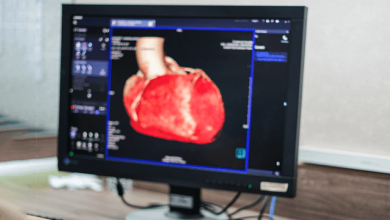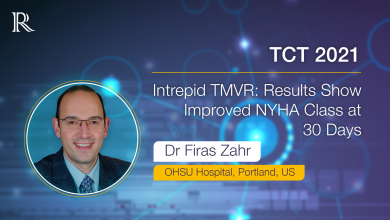Search results
Author(s):
Marti L McCulloch
,
Robert J Davis
Added:
3 years ago
The cardiac imaging field has experienced significant improvements over the last decade due to technological advances. Cardiac computed tomography (CT), cardiac magnetic resonance imaging (MRI), nuclear cardiology, and echocardiography have all become feasible imaging modalities for physicians to evaluate in order to answer specific diagnostic questions. Each of the aforementioned modalities has…
View more
Author(s):
Frank J Rybicki
Added:
3 years ago
Most advances in cardiac computed tomography (CT), particularly coronary CT angiography (CTA), have come from the development of protocols consistent with rapid incremental improvements in CT technology. The evolution of cardiac CT from early technology has been paralleled with evolving protocols that have extended cardiac CT beyond the imaging of coronary arteries alone: current applications…
View more
Author(s):
Richard Solomon
Added:
3 years ago
The Problem of Contrast-induced Nephropathy
Contrast-induced nephropathy (CIN) is an increasingly common cause of acute renal failure in both hospitalized patients and out-patients. The growth in contrast-enhanced imaging and interventional procedures is one cause of the increased incidence of CIN. An aging patient population, with more comorbidities such as reduced renal function, may be…
View more
Author(s):
Richard Solomon
Added:
3 years ago
The use of iodinated contrast media (CM) for both diagnostic imaging and interventional studies continues to increase. The introduction of multi-detector computed tomography (MDCT) scanners allows for quicker imaging of internal organs, and image acquisition is now fast enough for study of the coronary arteries. This technology requires the delivery of a high concentration of iodine to the…
View more
Author(s):
Richard Solomon
Added:
3 years ago
The use of iodinated contrast media (CM) for both diagnostic imaging and interventional studies continues to increase. The introduction of multi-detector computed tomography (MDCT) scanners allows for quicker imaging of internal organs, and image acquisition is now fast enough for study of the coronary arteries. This technology requires the delivery of a high concentration of iodine to the…
View more
Author(s):
Nithima Chaowalit
,
Patricia A Pellikka
Added:
3 years ago
How Far Have We Come?
Cardiac imaging using ultrasound (so-called ‘echocardiography’) was introduced more than 50 years ago. Resting echocardiographic detection of myocardial infarction was described as the reduction in regional contractile function,1 and the development of stress echocardiography in the early era was recognised after the introduction of 2D echocardiographic imaging. The initial…
View more
Author(s):
Nuno Cortez-Dias
,
Fausto J Pinto
Added:
3 years ago
Coronary artery disease (CAD) represents the leading cause of morbidity and mortality in western countries. Many non-invasive stress tests are currently available for detecting CAD and assessing prognosis. Non-invasive stress techniques comprise exercise electrocardiographic (ECG) stress testing and imaging techniques, namely exercise/pharmacological stress echocardiography (SEcho) and exercise…
View more
Author(s):
Karl B Kern
,
Sergio Timerman
,
José Antônio Franchini Ramires
Added:
3 years ago
Cardiocerebral resuscitation (CCR) is a relatively new approach to the resuscitation of patients with out-of-hospital cardiac arrest (see Figure 1). By 2003, both the accumulated resuscitation research data and our own local clinical experience in Tucson, Arizona clearly indicated that interruptions of chest compressions had a negative effect on survival. Accordingly, in November 2003 in co…
View more
TCT 23: PICSO-AMI-I
Author(s):
Giovanni Luigi Di Maria
Added:
5 months ago
Video
Author(s):
Firas Zahr
Added:
2 years ago
In this video interview, Dr Firas Zahr (OHSU Hospital, Portland, OR, US) outlines the 30-day outcomes of the Intrepid TMVR Early Feasibility Study, originally presented at TCT 2021. This was a prospective multicenter trial, designed to study the feasibility of the Intrepid TMVR System. At 30 days, findings show favourable haemodynamics and an improved NYHA class in patients with mitral…
View more












